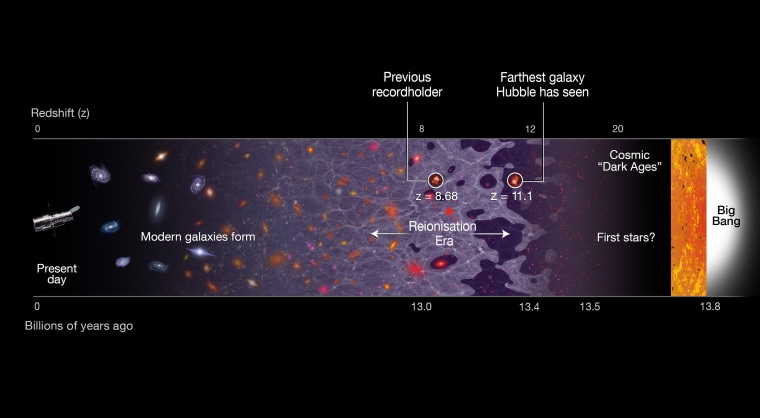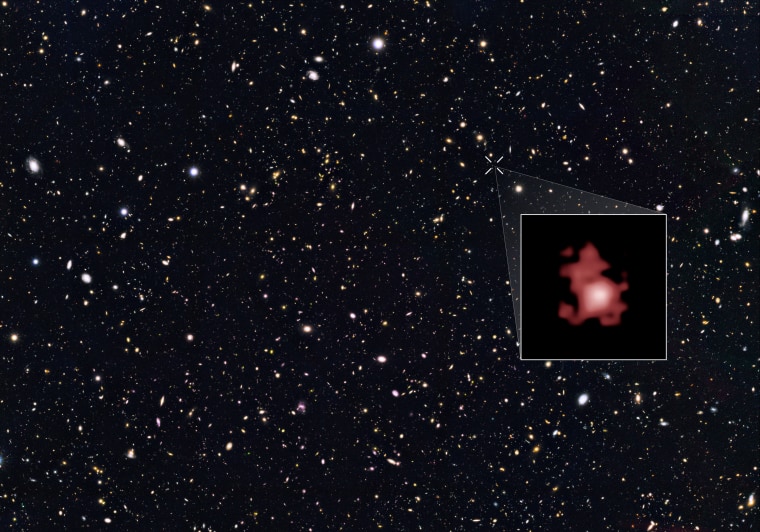Scientists using the Hubble Space Telescope have detected the most distant galaxy to date, a mere 400 million years after the Big Bang.
The galaxy is "creatively" named GN-z11 because it is located in the Great Observatories Origins Deep Survey (GOODS) north field, hence the "GN" and because it is located at a redshift (z) of ~11. There are two types of redshift: Doppler and cosmological, this is the latter - it's a logarithmic distance scale based on the expansion of the universe. For reference, our nearest neighbor the Andromeda Galaxy, while over 2.5 million light years away, is only at redshift of −0.001001. So redshift of 11 is pretty darn far to say the least. The previous record holder for most distant galaxy discovered was z = 8.6.

As you can see in the image above, galaxies in the nearby universe look the way you're probably used to seeing them: fully formed in to spirals and ellipticals and ones in between (due to mergers). However, galaxies in the distant universe are morphologically different because they are much, much younger - looking out in space is the same as looking back in time. Four hundred thousand years after the Big Bang, galaxies were just starting to form. GN-z11 is estimated to be 25 times smaller than our own galaxy, the Milky Way. It's not easy to see galaxies this small so far away, but GN-z11 is also rapid forming stars which makes it bright enough in infrared light for Hubble's Wide Field Camera 3 to detect it.
While you can't see GN-z11 with your own eyes, you can go outside tonight and look in its general direction (see video below) and wonder what more we'll learn about it once the James Webb Space Telescope (JWST) launches in the fall of 2018. JWST is designed to study distant galaxies just like this one and help us learn more about how they formed (among other things).
Here's some more geek from the week:
- Stunning photo gallery of animals in danger of extinction.
- If you're lucky, and under just the right conditions this time of year, you might see an ice flower or two. [VIDEO]
- The oldest fossilized life on land to date may be this weird fungus.
- The video series TestTube Plus answers the question you didn't realize you had: why do we have blood? [VIDEO]
- Engineers at Rutgers University are using 3D printing to provide portable tactile maps to blind students.
- People without synesthesia might soon be able to experience it with this sensory mask. [VIDEO]
- Crowdsourcing transcriptions of ancient papyrus tell of life in Egypt thousands of years ago.
- Fascinating data analysis and visualization of how a selection of well-known authors use punctuation.
- The last remaining external tank of the Space Shuttle program will soon make its way from New Orleans to Los Angeles via the Panama Canal.
- NASA is looking into how to break the sound barrier not with a bang, but a whisper.
Keep on geeking!
@Summer_Ash, In-house Astrophysicist
